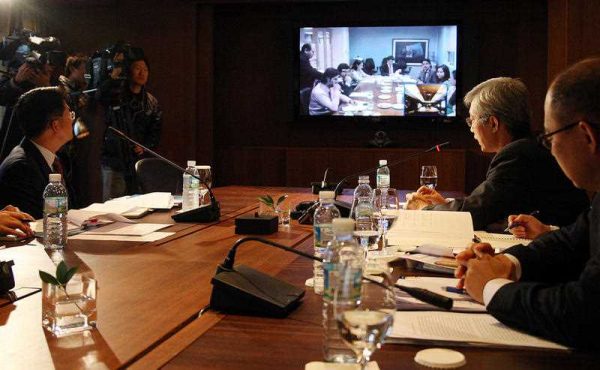Latin America also has an expanding regional market for Asian industrial goods and FDI. Technology transfer and marketing connections from Asian multinationals can assist Latin American firms joining global value chains and can promote internationally competitive industrialisation. Small and medium enterprises in both regions can also benefit as suppliers, subcontractors and service providers to multinationals.
Trade between the two regions has more than doubled over the past decade, reaching a historic high of over US$500 billion dollars in 2014. This figure is expected to grow to at least $750 billion by 2020.
Growth in interregional trade was visible during the global financial crisis of 2008-09, when the relationship provided a safe haven from declining markets in industrial economies. Another factor causing growth was buoyant demand for Latin American commodities from China, India and the ASEAN economies. Advances in information and communication technology, better logistics and falling trade barriers have also fostered economic ties between Asia and Latin America.
Before the 1990s there was little trade between the two regions. Latin America, whose goods were destined to the large North American market, used to view Asia as a poor region, riddled with economic crises and entailing high risks for business. Transport connections between these geographically remote regions were poor, trade barriers were high and few cultural, diplomatic and business ties existed. Also, Latin Americans largely speak Spanish or Portuguese, which most Asians do not.
One of the new drivers for business confidence is the spread of free trade agreements (FTAs) between the two regions. These agreements enhance market access, rules-based trade and business confidence. In 2004, only two FTAs (South Korea–Chile and Taiwan–Peru) existed. This figure increased to 9 in 2007 and to 22 in 2013. At least 25 FTAs are expected by 2020.
Taiwan is Asia’s most proactive Latin America trade pact negotiator, having concluded five FTAs. Singapore has signed four such deals with Latin American nations, and China, Japan and South Korea each have three FTAs. Meanwhile, Chile has eight FTAs with Asian economies and Peru has five. Japan’s FTAs with Peru and Mexico are also very important. The Japan–Mexico FTA provides access to the US via the North American Free Trade Agreement.
But much still needs to be done before Asia and Latin America can reach their full trade potential. The two regions have to increase the number of economies participating in free trade schemes like the Trans-Pacific Partnership. Their economic ties need to cover more sectors, such as services. Cross-regional policy cooperation needs to be enhanced, and structural reforms need to be accelerated.
APEC is a useful institution for creating business confidence. But few Latin American countries are in APEC. Instead, a newer institution, the Forum of East Asia Latin American Cooperation, has agreed to set up a business body to promote cooperation in trade and investment.
Latin America’s giant, Brazil, must strengthen ties with Asia. But Brazil only has one trade agreement with Asia and concerns have been expressed about its protectionist tendencies. Another key player could be Argentina, if it can untangle itself from financial crisis and escape going into default.
Mexico, Peru, Chile and Columbia have formed the Pacific Alliance and are attempting to become more market-friendly. Chile in particular has undertaken many reforms and has several FTAs with Asia. While the Pacific Alliance members proactively pursuing reform, with an interest in doing business with Asia, they are not as open as some outward-oriented Asian nations like Singapore.
In contrast to growing trade between Asia and Latin America, FDI has remained lacklustre during the past decade. Annual average greenfield investment flows from Asia to Latin America were $14.1 billion while those from Latin American to Asia were only $1.2 billion. Geographical remoteness, cultural differences and the business climate in Latin America partly explain the low levels of FDI.
Cumbersome domestic regulations are a problem. It takes relatively more time for multinationals to start a business in Latin America than in Asia, and it is more difficult to fire workers when adjustments are needed. Furthermore, Latin American workers are perceived to have lower productivity and poorer work ethic than Asian workers. These issues discourage Asian FDI flows into Latin America.
Governments across both regions should emphasise the growth potential for Asia–Latin American trade. There should be concerted efforts to open up markets, cut redundant regulations, boost education and promote cooperation in trade and investment between the two regions.
Ganeshan Wignaraja is Director of Research at the Asian Development Bank Institute, Tokyo. He is co-author of the recently published book New Frontiers in Asia-Latin America Integration: Trade Facilitation, Production Networks and FTAs.

